Brown Invents
Medical solutions with commercial potential
BBII awardees create technology, launch start-ups
Launched in 2018 with $8 million in philanthropic gifts from Brown donors, Brown Biomedical Innovations to Impact (BBII) is run by the University’s Division of Biology and Medicine in collaboration with Brown Technology Innovations. BBII manages an accelerator fund that supports academic biomedical technologies with potential for high impact in the commercial sector. Since 2018, BBII has made 17 awards supporting 15 faculty inventors and their technologies for a total of $1.8 million in funding.
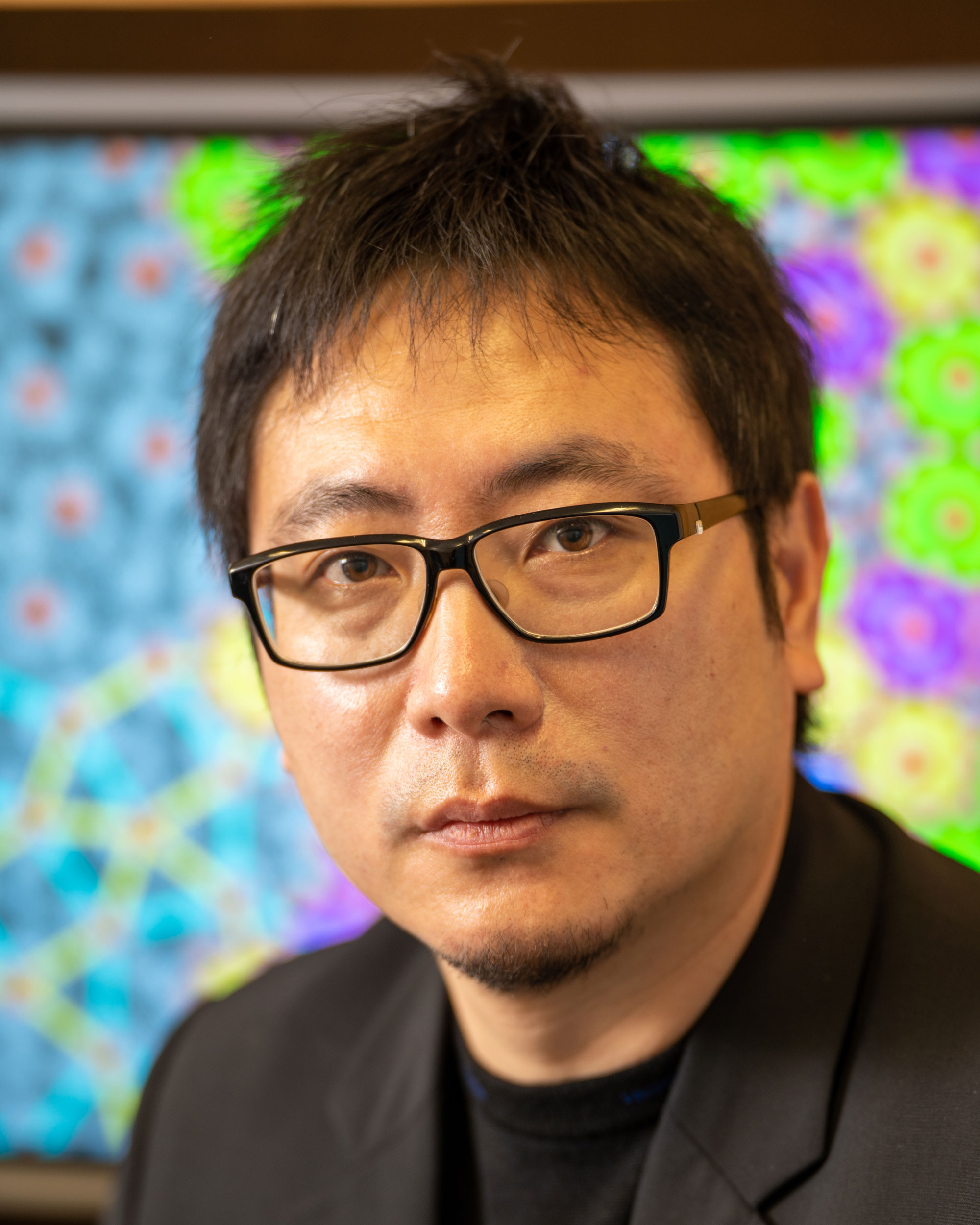

Angus Kingon, professor of entrepreneurship and engineering, and team member Ou Chen, associate professor of chemistry, will build upon research by Emeritus Professor Ted Morse that led to the development and patenting of a proof-of-concept novel x-ray scintillation detector, which has demonstrated both vastly improved resolution and a means of reducing the radiation dose rate. Their research will have implications for medical x-ray imaging, such as mammography, by lowering the x-ray dose and increasing the ability to detect abnormal features at an early stage.

Vikas Srivastava, assistant professor of engineering, and team member Albert Telfeian, MD, professor of neurosurgery, will develop a novel implantable lead for a spinal cord electrical stimulation device to manage chronic neuropathic pain. The lead will be made of nitinol, a material capable of shape memory that can be inserted with a needle. Once placed in the epidural space, it will expand to the correct shape. The advantage would be to achieve better contacts than can be achieved with a cylindrical lead while avoiding the surgery required for a larger paddle lead.

Kareen Coulombe, associate professor of engineering, and team members Bum-Rak Choi, associate professor of medicine (research), and Ulrike Mende, MD, professor of medicine, received a BBII award in 2020 for research to make therapeutic drugs safer for the heart. With an additional round of BBII funding in 2022, the team continued to develop an in vitro cardiac tissue model platform for drug discovery and cardiotoxicology testing. The team is further expanding the model to be able to test for cardiac side effects of oncology drugs as well as to identify drugs that can be used to mitigate or treat these side effects.
Startups based on Brown research
Previous BBII Awardees: Launching Start-ups
Several new faculty start-ups supported by BBII accelerator funding demonstrate the success of the BBII awards program in helping bridge the gap between when federal funding for research ends and when private investors are ready to invest. PedialyDx and XM Therapeutics are two such success stories.
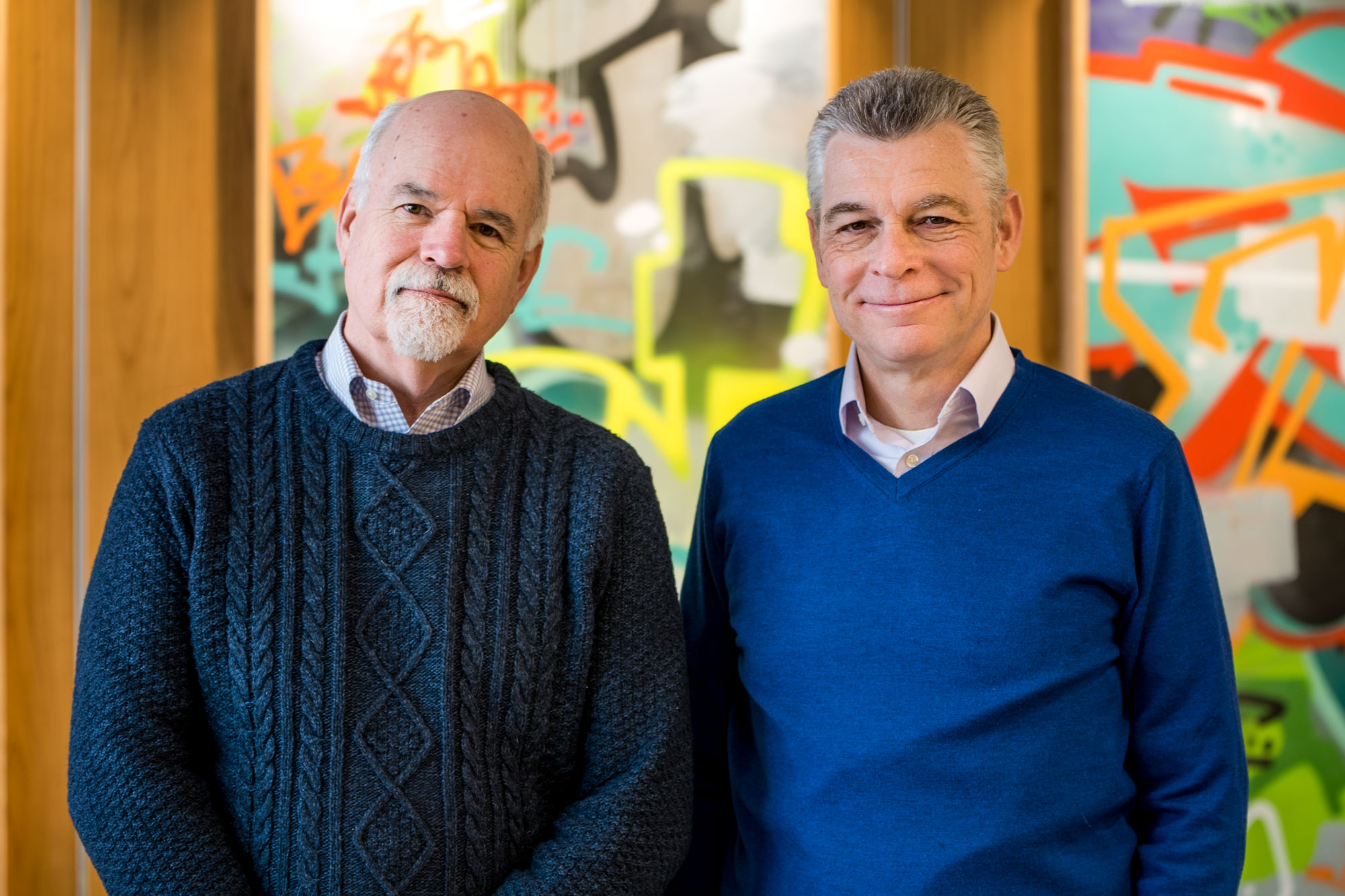
The Entrepreneur Connect Initiative, a project of Brown Technology Innovations (BTI), pairs seasoned entrepreneurs with faculty inventors to work on specific university intellectual properties with the goal of creating fundable start-ups. The entrepreneurs conduct customer discovery and bring a market perspective to the academic research, and the faculty inventors observe how the entrepreneurs approach their findings.
Once the entrepreneur and inventor have brought a project to maturity, the Entrepreneur Connect Initiative markets the opportunity to interested investors, drawing on angel investors and venture capitalists from both groups’ networks. In cases in which BBII has provided financial and project management support for a research project, the BTI team offers guidance on how to achieve both scientific and business goals.
The start-up XM Therapeutics is a good example of the initiative’s successful matchmaking. Members of the Entrepreneur Connect Initiative introduced entrepreneur Frank Ahmann to Jeffrey Morgan, a professor of pathology and laboratory medicine at Brown who had developed a technology for making extracellular matrix particles for use in treating damaged tissue in various organs. Together they formed the Rhode Island-based XM Therapeutics; Ahmann became president and CEO.
 In 2020, the team of Barry Lester, a professor of psychiatry, human behavior, and pediatrics, and Stephen Sheinkopf, executive director of the Thompson Center for Autism and Neurodevelopmental Disorders at the University of Missouri and an adjunct associate professor of psychiatry, human behavior, and pediatrics, received a BBII award to develop diagnostic tools based on acoustic signatures from infants’ cries that are not discernible to the human ear. Recently, a new start-up, PedialyDx, was formed to further develop and commercialize this technology. The first product will be a handheld device that uses a cloud-based algorithm to determine whether the cries of an infant with prenatal opioid exposure meet the criteria for neonatal opioid withdrawal syndrome. The company is also exploring use of the device in autism research.
In 2020, the team of Barry Lester, a professor of psychiatry, human behavior, and pediatrics, and Stephen Sheinkopf, executive director of the Thompson Center for Autism and Neurodevelopmental Disorders at the University of Missouri and an adjunct associate professor of psychiatry, human behavior, and pediatrics, received a BBII award to develop diagnostic tools based on acoustic signatures from infants’ cries that are not discernible to the human ear. Recently, a new start-up, PedialyDx, was formed to further develop and commercialize this technology. The first product will be a handheld device that uses a cloud-based algorithm to determine whether the cries of an infant with prenatal opioid exposure meet the criteria for neonatal opioid withdrawal syndrome. The company is also exploring use of the device in autism research.
 In most chronic diseases, including heart failure, kidney failure, and pulmonary fibrosis, the extracellular matrix becomes abnormal, leading to inflammation, fibrosis, and hypoxia, or reduced oxygen supply. In 2019, with the support of BBII funds, Jeffrey Morgan, a professor of pathology and laboratory medicine, developed a process for producing uniform injectable particles that potentially could be used to treat damaged tissue in various organs. The company XM Therapeutics was formed to further develop the treatment and bring it to clinical trials. XM Therapeutics is initially focusing on two of the most serious disorders, heart failure and pulmonary fibrosis, for which the clinical need and market size are enormous and continue to grow.
In most chronic diseases, including heart failure, kidney failure, and pulmonary fibrosis, the extracellular matrix becomes abnormal, leading to inflammation, fibrosis, and hypoxia, or reduced oxygen supply. In 2019, with the support of BBII funds, Jeffrey Morgan, a professor of pathology and laboratory medicine, developed a process for producing uniform injectable particles that potentially could be used to treat damaged tissue in various organs. The company XM Therapeutics was formed to further develop the treatment and bring it to clinical trials. XM Therapeutics is initially focusing on two of the most serious disorders, heart failure and pulmonary fibrosis, for which the clinical need and market size are enormous and continue to grow.
Novel technologies in development
Brown's researchers are developing innovative technologies, treatments, and diagnostic tools that could lead to commercialized products with real-world applications.
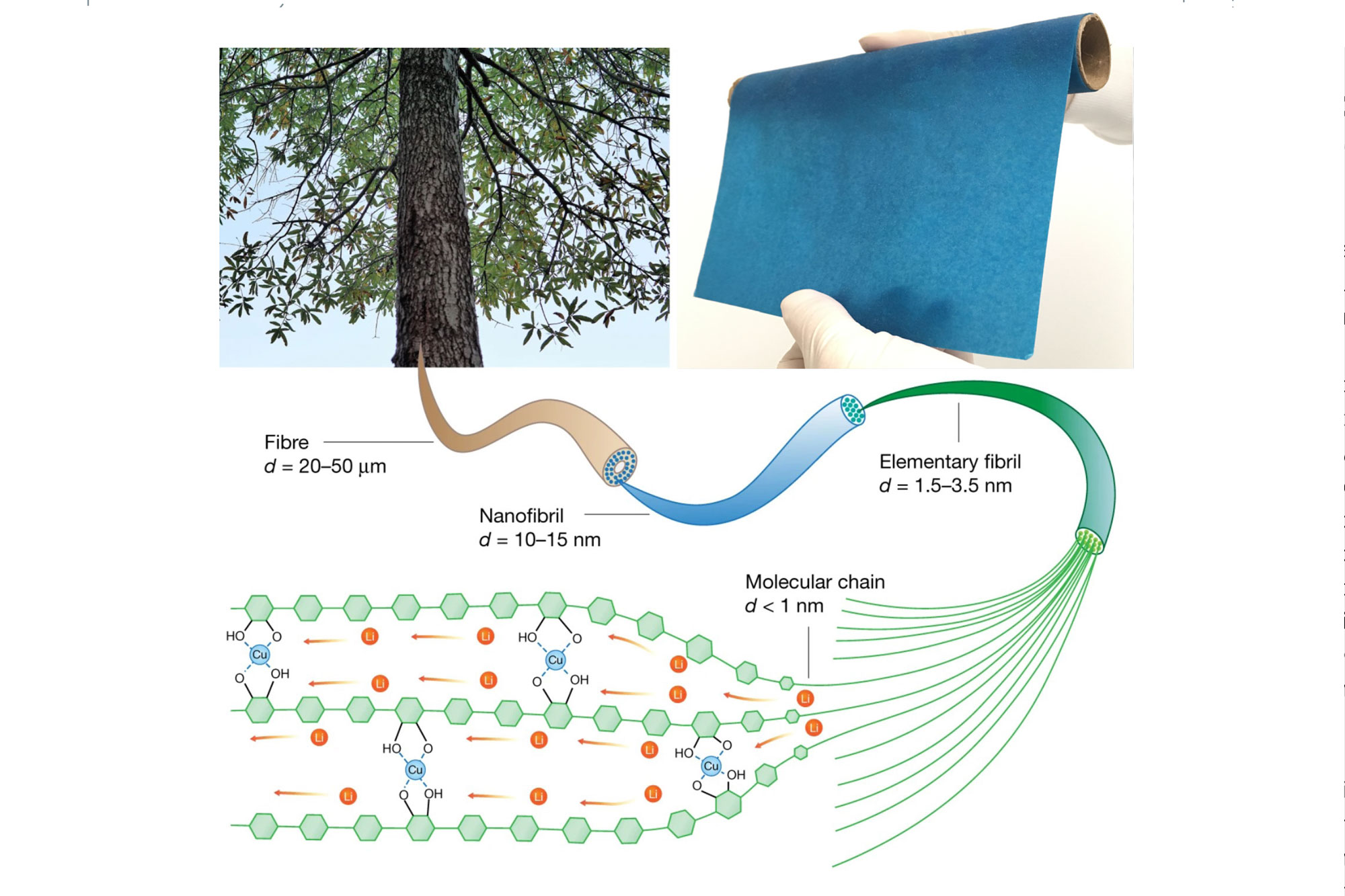
The pursuit of more stable and powerful lithium-ion batteries hinges in part on the development of improved electrolytes. Current lithium-ion batteries contain electrolytes made from lithium salt dissolved in a liquid organic solvent. Liquid electrolytes can short circuit and are made with chemicals that are toxic and flammable. Solid electrolytes are made of ceramic, and while excellent at conducting ions, they are thick, rigid, and brittle.
Now there’s a better option—a thin and flexible material derived from trees for use in solid-state batteries. The new material was developed by a team of researchers co-led by the laboratory of Yue Qi, a professor in Brown’s School of Engineering, and a materials science laboratory at the University of Maryland. In a paper published in Nature in October 2021, the team describes a solid ion conductor that combines copper with cellulose nanofibrils— polymer tubes derived from wood. The paper-thin material, which has an ion conductivity of 10 to 100 times that of other polymer ion conductors, could be used as either a solid battery electrolyte or as an ion-conducting binder for the cathode of a solid-state battery. Eventually, the new material could be a step toward bringing solid-state battery technology to mass production.
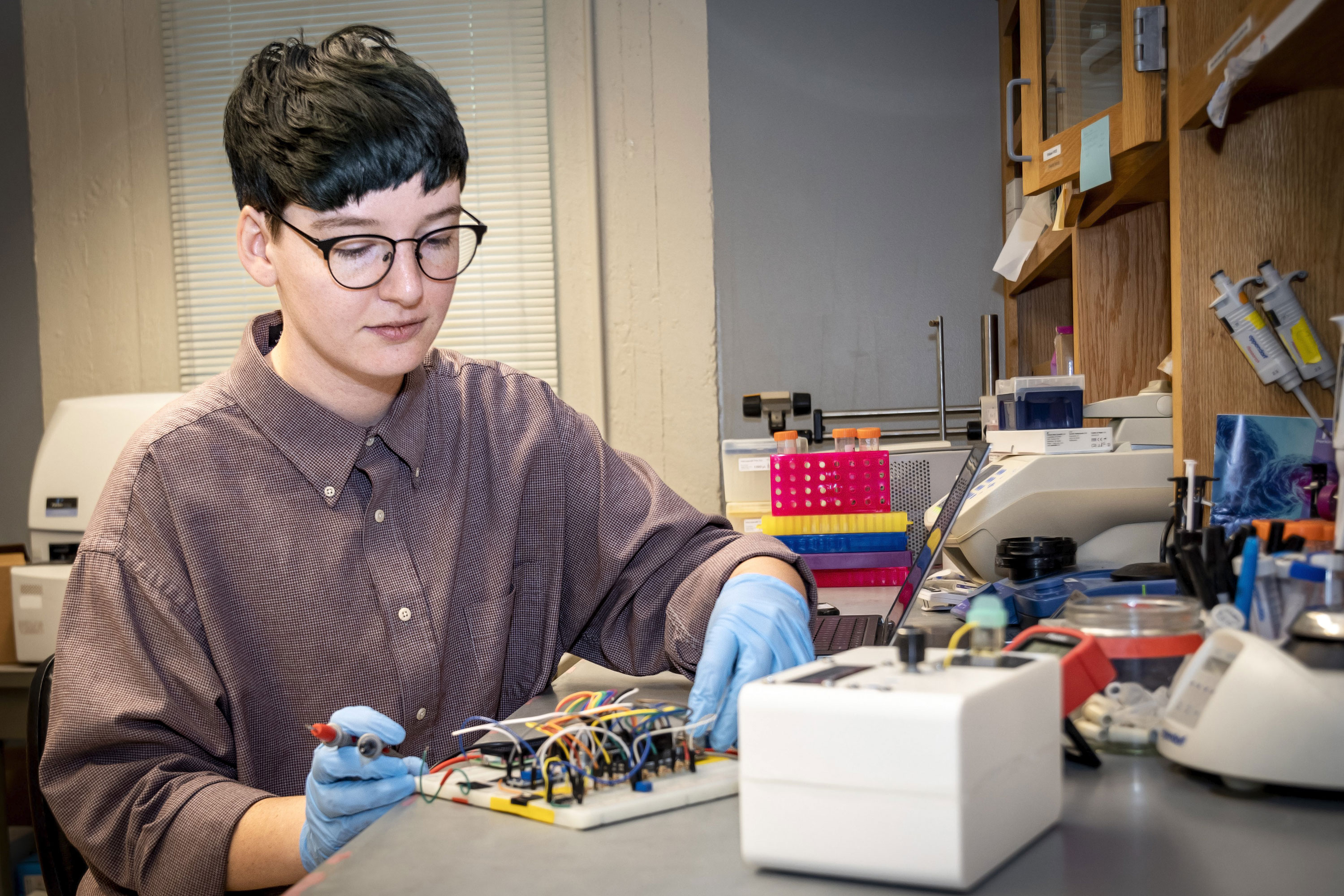
Cancer researchers know that individual tumor cells can reveal important information about how an individual’s cancer develops and spreads and how it might be best treated. Yet conventional methods of tumor analysis rely on the extraction of nucleic acids from bulk tissue samples and result in low-resolution genetic readouts. The poor quality of these results can even lead to misdiagnosis.
Cel Welch, a PhD candidate in the lab of engineering professor Anubhav Tripathi, has developed a way to isolate high-quality, intact single cells from biopsied cancer tissue within minutes. The individual cells can be used for single-cell RNA sequencing, which is especially useful in detecting rare mutations.
The process uses electric field fluctuations rather than enzymes to separate cells from one another. The biopsied tissue is placed in a liquid-filled receptacle between two parallel plate electrodes. Electric field fluctuations applied to the liquid create opposing forces, which cause the tissue cells to move first in one direction and then in the opposite direction until they separate from one another.
The new electric field method is superior to standard isolation methods in terms of labor, cost, and efficiency and was described in June 2022 in Scientific Reports. Welch has been named to Forbes’s 2023 30 Under 30 list in science.
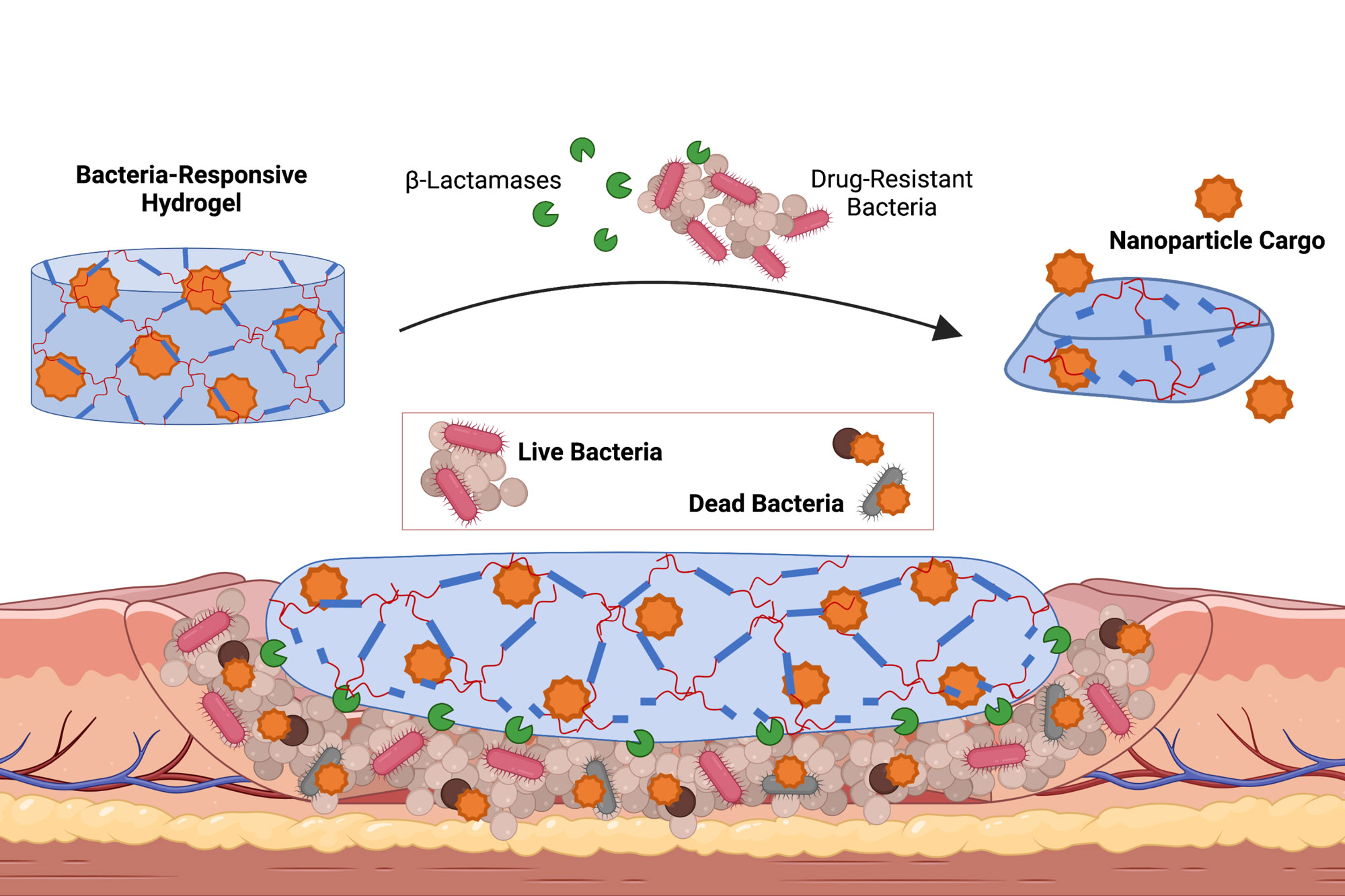
The rapid spread of antibiotic-resistant bacteria is causing serious global public health and environmental issues. Beta‐lactamases, common enzymes released by a variety of harmful bacteria, destroy antibiotics and are a major cause of drug resistance. Anita Shukla, an associate professor in Brown’s School of Engineering, and her graduate students developed a responsive bacteria-triggered drug-delivery system that could be used to make wound dressings and deliver medication on demand. The system consists of antibiotic-loaded hydrogels that respond to the presence of beta-lactamases by degrading to release encapsulated therapeutic nanoparticles. Such smart hydrogels could be used in diagnostics to reduce the amount of drug needed for treatment, in turn limiting side effects and the development of antibiotic resistance and increasing the lifetime of newly introduced antibiotics. The new material was described in a 2022 issue of the journal ACS Applied Materials & Interfaces.

Strange metals, discovered around 30 years ago, are materials related to high-temperature superconductors and share fundamental quantum attributes with black holes. High-temperature superconductors conduct electricity with zero resistance at temperatures far above normal superconductors. The two fundamental classes of subatomic particles are fermions and bosons, which usually behave very differently. However, a research team co-led by Brown physics professor James Valles has found strange metal behavior in a material in which electrical charge is carried not by electrons, which are fermions, but by more wavelike entities called Cooper pairs. Although they consist of two electrons, Cooper pairs are bosons. Using a material called yttrium barium copper oxide, Valles and his team discovered strange metal behavior in a Cooper-pair metallic state—the first time strange metal behavior had been seen in a bosonic system. The findings, reported in Nature in January 2022, could help scientists understand strange metal behavior, such as high-temperature superconductivity, and potentially provide fundamental insights into the quantum world.